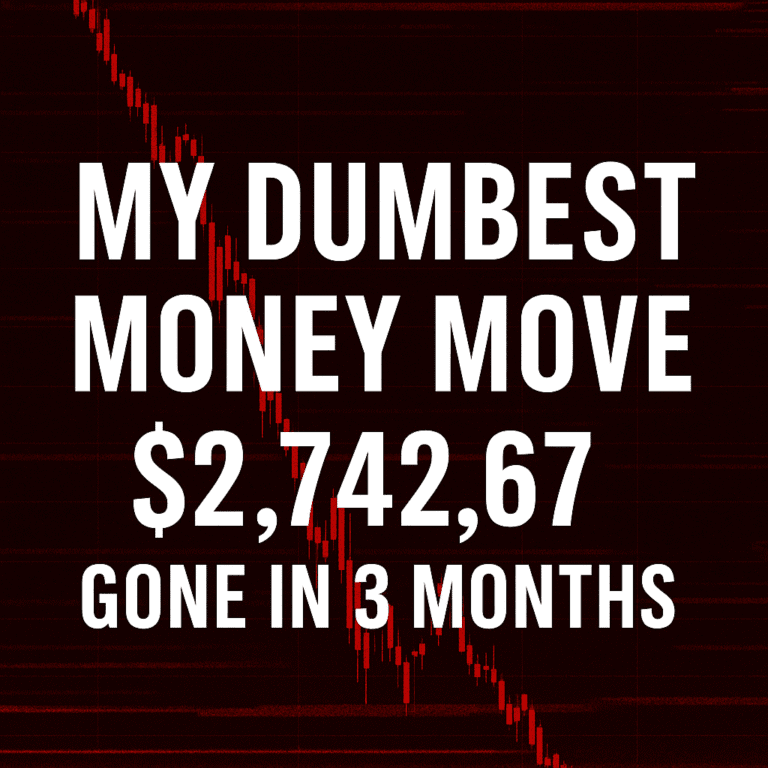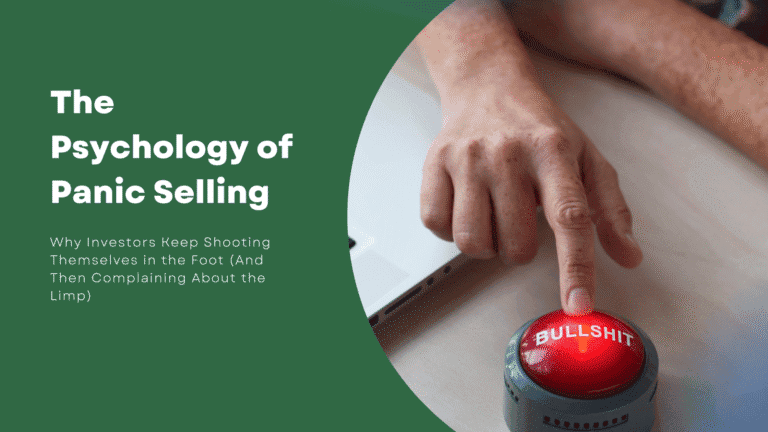Why Your 401(k) Hates You (And How to Make It Love You Back)
If your 401(k) could talk, it would probably be sending you passive-aggressive texts right now. And honestly, who can blame it? You’ve been ignoring it like that cousin who only calls when they need bail money.
Before we fix that, let’s talk about real passive income—the kind that shows up while you’re drooling on your pillow. These 5 dividend stocks do exactly that, paying you while you sleep (unlike your ex, who only took and never gave).
Now, back to your 401(k). It’s your retirement lifeline and, let’s be real, your biggest financial mystery. But the way you’ve been treating it? It’s like leaving a Ferrari in the driveway with no gas and expecting it to drive you to a beach house in 20 years.
So, how do you stop neglecting it and make it actually work for your future? Let’s break it down—witty, sarcastic style. Stick around—because by the end, your 401(k) will love you again, and those dividend stocks will be your new BFFs.
Step 1: Stop Ghosting Your 401(k)
The number of people who don’t know what’s in their 401(k) is mind-blowing. If you haven’t logged in since Obama was in office, your 401(k) is probably a hot mess. Maybe you’re still sitting on a default target-date fund that’s charging you 0.8% in fees (which, by the way, is highway robbery).
Here’s the deal:
- Log in. Yes, that means finding your password or resetting it (you’re not alone if you’ve forgotten it).
- Check your allocations. Are you diversified, or just throwing darts at random mutual funds?
- Look at your fees. Because nothing says “retirement sabotage” like losing thousands of dollars to expense ratios you didn’t even know existed.
Need a reality check? Read The Dumbest Money Mistake I Ever Made (And What It Cost Me) for a cautionary tale that’ll make you log in faster than you can say “compound interest.”
Step 2: Increase Contributions Before Your Boss Spends It on Golf

Your 401(k) hates you if you’re only contributing 3% of your salary. That’s not even enough to fund a halfway decent coffee habit in retirement, let alone a beach vacation. If your company matches contributions, max that out first. It’s free money—yes, actual free money—and you’d be insane not to grab it.
Example:
If you make $60,000 a year and your company matches 4%, but you’re only contributing 3%, you’re literally leaving $600 on the table every year. That’s $12,000 over 20 years—and that’s before compounding. (Congrats, you just bought your boss’s next Tesla.)
The math is simple: your employer match is the fastest, easiest return on investment you’ll ever see. No dividend stock, no hot tech IPO, no meme stock will give you a guaranteed 100% return like a company match. If you’re not taking full advantage, you’re basically lighting money on fire.
Want to understand how employer matches really work? Check out Investopedia’s 401(k) Matching Guide for a deep dive into strategies that can add tens of thousands of dollars to your nest egg.
Step 3: Learn the Art of Asset Allocation (AKA Don’t Be That Guy)
Your 401(k) isn’t just a dusty retirement account—it’s a potential sleep-money machine. If you set it up right, it can quietly churn out returns and compounding gains while you do absolutely nothing (except maybe snore).
Think of your 401(k) as the less glamorous cousin of dividend investing. While dividend stocks (like these 5 that literally pay you while you sleep), hand you cash payouts, your 401(k) quietly reinvests your earnings to snowball your wealth. Both approaches share the same secret weapon: compounding.
Here’s how to make your 401(k) more “dividend-like”:
- Reinvest everything. Stop taking distributions or loans unless you want your future self to send hate mail.
- Balance growth and stability. Dividend stocks pay now, but a diversified 401(k) can mimic that slow, steady income growth later.
- Treat every contribution like a future paycheck. The more you invest now, the more your future self will thank you with margaritas on a Tuesday afternoon.
If you want to double down on the sleep-money mindset, check out 5 Dividend Stocks That Pay You While You Sleep. It’s like a crash course in letting your money work harder than you ever will.
Step 4: Cut the Dead Weight (High Fees and Bad Funds)

If your 401(k) were a party, high-fee funds would be that one guy who shows up, eats all the snacks, drinks all the beer, and leaves you with the tab. Expense ratios are the vampires of your portfolio—sucking out returns so quietly, you don’t even notice until you’re wondering why your balance hasn’t grown in years.
Here’s the reality check:
- A 1% annual fee might not sound like much, but over 30 years, it can eat up tens of thousands of dollars—money that could’ve gone toward your dream retirement… or at least a better brand of whiskey.
- Some funds charge you as if they’re performing investing miracles, when in reality, they’re just tracking the S&P 500 and calling it a day.
Action plan:
Want a horror story? Read The Dumbest Money Mistake I Ever Made (And What It Cost Me) and see how fees almost robbed me blind.
Dig into your fund’s expense ratios. If anything’s over 0.50%, question why you’re paying more than you’d tip a decent bartender.
Consider swapping out expensive mutual funds for low-cost index funds or ETFs if your plan allows it.
Step 5: Automate Like a Lazy Genius
The best investors aren’t the ones who watch CNBC 24/7 or try to time the market (spoiler: they’re usually broke and angry). The best investors? Lazy geniuses. They automate their contributions, forget about the noise, and let compounding do the heavy lifting.
Here’s how to channel your inner lazy genius:
- Set up automatic contributions—out of sight, out of mind, and into the account that’s building your future.
- Bump your contribution rate by 1% every few months. You won’t miss the money now, but future-you will high-five present-you.
- Rebalance once or twice a year—just enough to keep things on track without becoming “that guy” who refreshes his account every hour.
When you automate, you take emotion out of investing (and trust me, emotion is the silent killer of retirement accounts). Pair this with building “sleep money” using 5 Dividend Stocks That Pay You While You Sleep, and you’ll have a one-two punch for financial freedom.
Step 6: The Secret Sauce—Side Hustle Your Retirement
If your 401(k) still feels underwhelming—and let’s be honest, it probably does—you need to add fuel to the fire. The sad truth? Contributing the bare minimum and praying for market magic won’t cut it. That’s where the side hustle comes in.
Whether it’s freelancing, starting a YouTube channel, selling digital products, or simply flipping your random junk on eBay, extra income is the secret sauce to fast-tracking your retirement. And guess what? It’s not just about hustling—it’s about redirecting that extra cash into your 401(k) before it vanishes on late-night Amazon impulse buys.
Action plan:
- Start small. Pick one side hustle that won’t make you hate your life—something you can do in a few hours a week.
- Automate your wins. Every dollar earned from your side hustle? Send it straight to your retirement account or dividend stocks that pay you while you sleep.
- Think long-term. That extra $500 a month from freelancing? Invested and compounded over 20 years, it could easily snowball into six figures—while you sip margaritas instead of clocking in at 70.
If you’re feeling bold, use your side hustle to max out your 401(k) each year. That’s like pouring rocket fuel on your retirement plan. And if you really want to geek out on “money that works harder than you,” check out 5 Dividend Stocks That Pay You While You Sleep—because extra cash deserves to pull double duty.
Witty Recap: 401(k) TLC
Here’s your “Don’t Be Dumb” 401(k) Checklist:
- Log in. (Seriously.)
- Max the match.
- Diversify. (Your company stock isn’t a retirement plan.)
- Ignore market tantrums.
- Kill high fees.
- Automate your life.
- Add more fuel.
Final Word
Your 401(k) doesn’t have to hate you. It just wants attention—like your dog or your Netflix watchlist. Give it the right mix of contributions, diversification, and low fees, and it will love you back with compounding interest so powerful you might actually retire before your knees give out.






